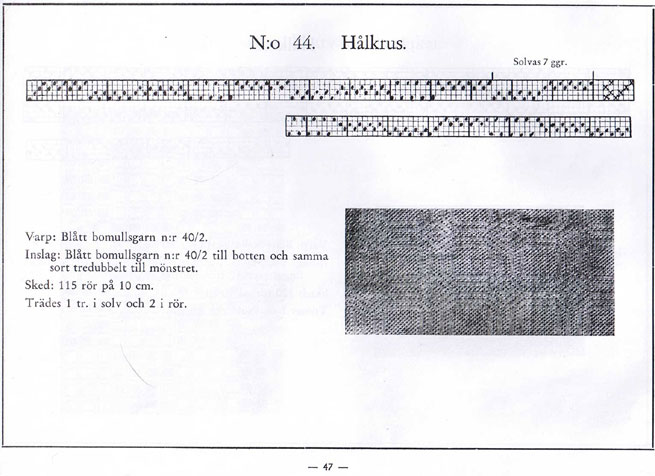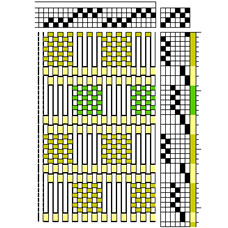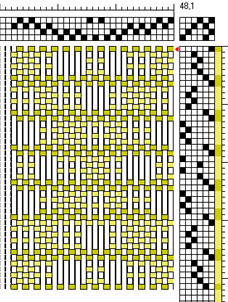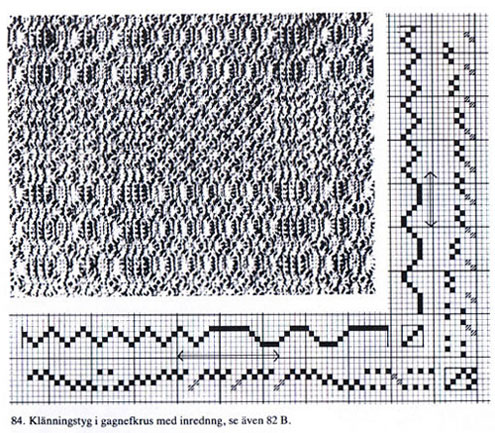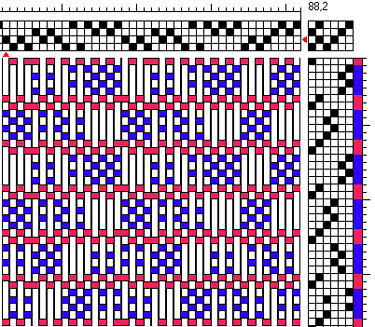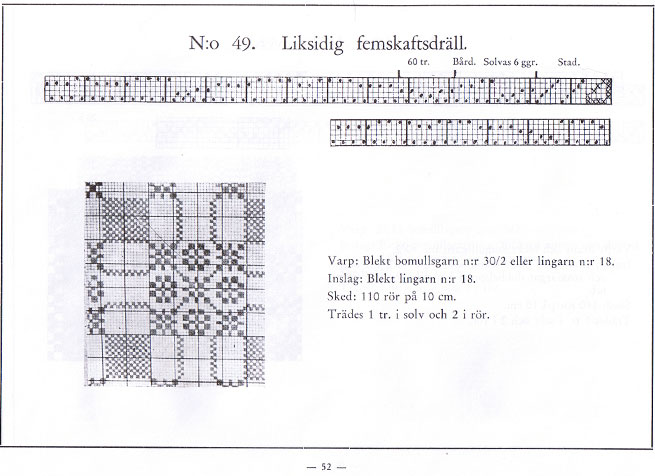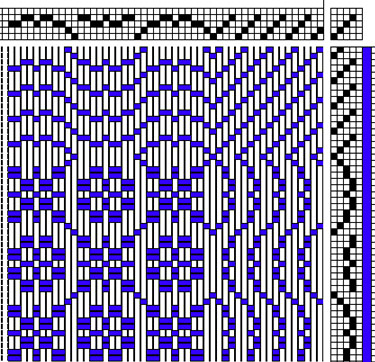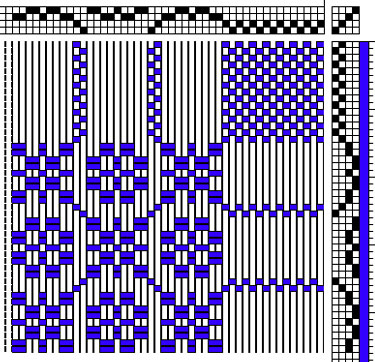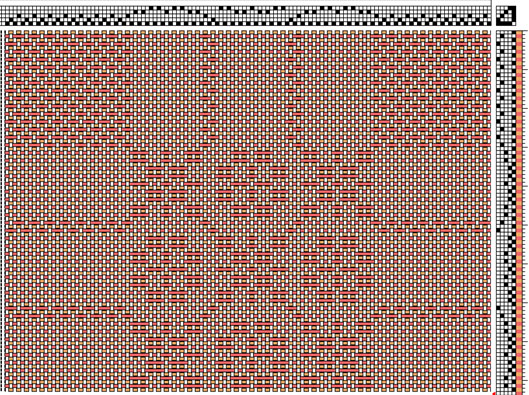It is customary to use two wefts of different grists – use the thicker for the picks that
form tabby over the whole width. The thicker weft must be laid in with very generous slack, so that
there is enough to make the outlines curve (as in the picture).
It is also important that the "holes" are not woven too high, or the outlining weft will (again)
have a problem with the curving.
For a time, this "simple" hålkrus was very popular to use for bed covers - so much that I have
seen it referred to as "bed cover weave".
The structure has long floats at the reverse side, which limits its useability.
When I instead went to Lundell, I found she regarded hålkrus somewhat differently -
she first mentions it together with monk's belt. She says hålkrus can be woven on any monk's belt threading
- you only change the tie-up.
It is also possible to make a more patterned variant, usually called (in Swedish) Gagnefkrus.
Cyrus gives a picture with a profile draft (right), and also offers a drawdown of a small portion.

